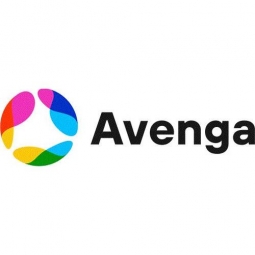
技术
- 网络安全和隐私 - 身份认证管理
- 平台即服务 (PaaS) - 应用开发平台
适用行业
- 运输
- 公用事业
适用功能
- 采购
- 产品研发
用例
- 边缘计算与边缘智能
- 语音生物识别
客户
一家全球科技公司
关于客户
一家全球技术公司,在 100 多个国家/地区设有当地办事处,提供涵盖电气化、过程自动化、运动、机器人和离散自动化业务领域的集成解决方案,推动社会和行业转型,迈向更具生产力和可持续性的未来。
挑战
作为拥有 130 年与制造、公用事业、基础设施和运输合作历史的技术领导者,我们的客户正在推动行业向更可持续的未来转型,并专注于提供符合客户需求的新服务和解决方案.
他们需要一个经验丰富且敬业的技术合作伙伴来支持他们对过时的解决方案进行迁移和现代化改造,以实现新产品、服务、收入流和可扩展性,从而为客户提供更多价值。他们的解决方案严重缺乏可扩展性和适当的性能,导致业务生产力和用户体验不佳。
在技术挑战中,客户需要对其进行现代化改造:
- 由经典网络驱动器和基于 Lotus Note 的电子邮件组成的遗留 IT 环境。
- 复杂的多场方案,包括 SharePoint Online 和本地。
解决方案
Avenga 团队参与了支持 SharePoint 的新系统的开发,以及基础架构迁移和支持。解决方案交付包括:
- 开发定制的迁移脚本,以便使用适当的工具将内容从旧系统迁移到 SharePoint。
- 根据内容治理最佳实践设计和实施海关政策,以保持最佳性能、可搜索性和安全性。
- 实施联合和混合方案,使他们能够混合本地旧版 SharePoint 场和 SharePoint Online,作为内容服务平台。
- 实施自定义身份验证提供程序,允许将 SharePoint 环境与 ADFS 集成,支持 NTLM 身份验证方案。
- 自定义配置服务,这是用于自助创建新站点和组的自定义工作流。
运营影响
数量效益

Case Study missing?
Start adding your own!
Register with your work email and create a new case study profile for your business.
相关案例.

Case Study
IoT Solutions for Smart City | Internet of Things Case Study
There were several challenges faced: It is challenging to build an appliance that can withstand a wide range of voltage fluctuations from as low at 90v to as high as 320v. Since the device would be installed in remote locations, its resilience was of paramount importance. The device would have to deal with poor network coverage and have the ability to store and re-transmit data if networks were not available, which is often the case in rural India. The device could store up to 30 days of data.

Case Study
Automation of the Oguz-Gabala-Baku water pipeline, Azerbaijan
The Oguz-Gabala-Baku water pipeline project dates back to plans from the 1970’s. Baku’s growth was historically driven by the booming oil industry and required the import of drinking water from outside of the city. Before the construction of the pipeline, some 60 percent of the city’s households received water for only a few hours daily. After completion of the project, 75 percent of the two million Baku residents are now served around the clock with potable water, based on World Health Organization (WHO) standards. The 262-kilometer pipeline requires no pumping station, but uses the altitude differences between the Caucasian mountains and the capital to supply 432,000 m³/d to the Ceyranbatan water reservoir. To the people of Baku, the pipeline is “the most important project not only in 2010, but of the last 20 years.”

Case Study
GPRS Mobile Network for Smart Metering
Around the world, the electricity supply industry is turning to ‘smart’ meters to lower costs, reduce emissions and improve the management of customer supplies. Smart meters collect detailed consumption information and using this feedback consumers can better understand their energy usage which in turn enables them to modify their consumption to save money and help to cut carbon emissions. A smart meter can be defined in many ways, but generally includes an element of two-way communication between the household meter and the utility provider to efficiently collect detailed energy usage data. Some implementations include consumer feedback beyond the energy bill to include online web data, SMS text messages or an information display in consumers’ premises. Providing a cost-effective, reliable communications mechanism is one of the most challenging aspects of a smart meter implementation. In New Zealand, the utilities have embraced smart metering and designed cost effective ways for it to be implemented. The New Zealand government has encouraged such a move to smart metering by ensuring the energy legislation is consistent with the delivery of benefits to the consumer while allowing innovation in this area. On the ground, AMS is a leader in the deployment of smart metering and associated services. Several of New Zealand’s energy retailers were looking for smart metering services for their residential and small business customers which will eventually account for over 500,000 meters when the multi-year national deployment program is concluded. To respond to these requirements, AMS needed to put together a solution that included data communications between each meter and the central data collection point and the solution proposed by Vodafone satisfied that requirement.

Case Study
Airport SCADA Systems Improve Service Levels
Modern airports are one of the busiest environments on Earth and rely on process automation equipment to ensure service operators achieve their KPIs. Increasingly airport SCADA systems are being used to control all aspects of the operation and associated facilities. This is because unplanned system downtime can cost dearly, both in terms of reduced revenues and the associated loss of customer satisfaction due to inevitable travel inconvenience and disruption.

Case Study
NB-IoT connected smart meters to improve gas metering in Shenzhen
Shenzhen Gas has a large fleet of existing gas meters, which are installed in a variety of hard to reach locations, such as indoors and underground, meaning that existing communications networks have struggled to maintain connectivity with all meters. The meter success rate is low, data transmissions are so far unstable and power consumption is too high. Against this background, Shenzhen Gas, China Telecom, Huawei, and Goldcard have jointly trialed NB-IoT gas meters to try and solve some of the challenges that the industry faces with today’s smart gas meters.

Case Study
IoT-based Fleet Intelligence Innovation
Speed to market is precious for DRVR, a rapidly growing start-up company. With a business model dependent on reliable mobile data, managers were spending their lives trying to negotiate data roaming deals with mobile network operators in different countries. And, even then, service quality was a constant concern.



